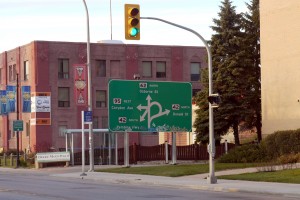
Naturally when people think of the idea of being homeless, they associate it with not having a stable home. However, Nersessova explains in her article, “Tapestry of Space: Domestic Architecture and Underground Communities in Margaret Morton’s Photography of a Forgotten New York”, that the idea of being homeless is actually misunderstood. This summary covers the main points Nersessova used to clarify the meaning of homelessness.
The idea of being homeless is not so much as being physically homeless, but more of a test of a person’s psychological strength. These people have become stripped to the bare necessities of life, or in other words, only have the things they need to survive. In doing so, the homeless who live in these tunnels have become liberated from the exterior stresses that plague those who are do not live in the tunnel. However, because of the lack of exterior stresses, the inhabitants of the tunnel have more time to reflect and build upon themselves. (Nersessova)
In a way, the homeless who live in the tunnel are like explorers. Nersessova compares those who live in the city as tourists as they restricted to the conventional maps that has been drawn by the government. Unlike the people who live in the tunnel, the “tourists” only see the areas that are considered profitable, whereas, the “explorers” see the city as a whole. The explorers travel to the areas that are deemed undesirable, and see the city for what it is, rather than what is shown to them.
As a result, the nonprofitable areas like the tunnel, are not shown on conventional maps as it is considered dangerous to be in. However, ironically enough, the tunnel is actually one of the safest areas to be in because of the lack of desire people have to travel into it. As Larry states, “You never know what’s going to happen there in the structure. This is a solid structure. And there’s not a lot of traffic here like you find up above this. On the streets there’s too much traffic and there’s too many things that can endanger your life.”[ 14]. The tunnel provides an escape for those who have failed to live in a capitalist society which promotes greed.
The tunnel does not only provide a physical shelter to those who inhabit it, but also as an economical shelter. The fears the homeless described in Morton’s study are not only physical dangers but economical ones. The system of capitalism promotes false advertisement and the false belief that having great wealth will bring happiness. Many people purchase things not because they necessarily need them, but because of the trust they have invested into the system. Despite this, the homeless find a way to work the system in their favor, even though the system is the reason they became homeless in the first place. (Nersessova).
However, the homeless living in the tunnel were forced out and their homes were destroyed, despite being in a public space. Nersessova labels the eviction of the homeless as a “war on public space”. The richer parts of society have more space and thus, more control over their built environment, whereas as the poor have much less space and equally less control over their built environment. By destroying the personal spaces of the homeless, society denies the fact that these people are self sufficient and that their homes are indeed homes. This is what Nersessova refers to as domestic architecture. Until people accept the idea of domestic architecture, the war on public space between the homeless and society will continue.
Bibliography
Nersessova, Irina.“Tapestry Of Space: Domestic Architecture And Underground Communities In Margaret Morton’s Photography Of A Forgotten New York.” Disclosure 23 (2014): 26. Advanced Placement Source. Web. 20 Nov. 2015.



